Uncovering the Story of the Historical
and Biblical City of Ephesus
Story by Alley L. Biniarz
Photography by Bill and Pam Seney
Pam and Bill Seney are known in the Windsor-Essex area for their well-researched travels and the spreadsheets that help take them to far off places around the world. That research would lead them to one of their favourite historic sites to date: to see the ruins in the ancient city of Ephesus. At 15% excavation, archaeologists are just scratching the surface of what life was like in Ephesus. Much of the ancient history is unrecorded or unreliable but as they steadily uncover pieces, more of its story and significance throughout history comes to the surface.
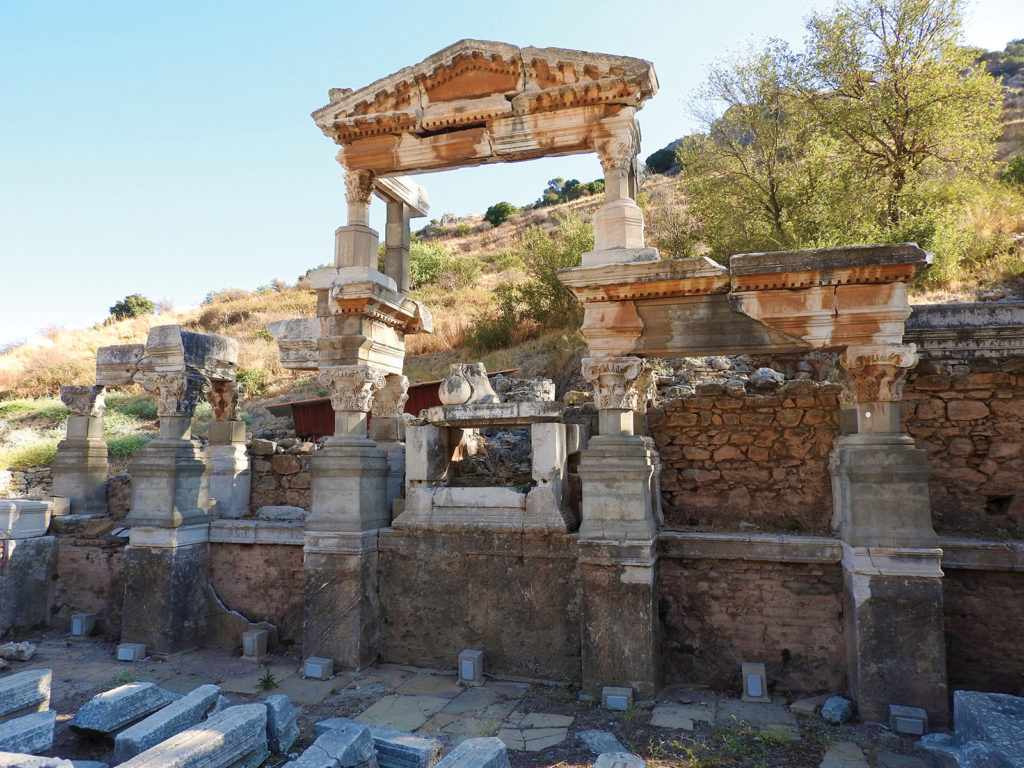
Ephesus is located near the western shores of modern-day Turkey and is accessible through the Kusadasi cruise port. This stop was the main reason for Pam and Bill booking this particular cruise and upon arriving, little else was a consideration other than making it 25 minutes inland to Ephesus.
“This area is one of the world’s classical sights and was once a cultural heartland for Ancient Greece,” Bill explains. Now just one main street, Ephesus once sprawled up into the mountains and is estimated to have housed 250,000 people. Some of the richest people in the world lived here and they lived in sheer luxury with homes arranged around a central atrium, richly decorated with art on two or three floors.
“When you walk through the main entrance and the city of Ephesus opens up to you, it brings you goosebumps,” Pam says. She describes the experience of walking down the 500-metre marble sidewalk and noticing the imprinted grooves that were once used to help grip people’s sandals to keep them from slipping during the rain. All beneath this marble walkway archaeologists have located underground sewer systems and aqueducts that they’ve concluded would bring freshwater into the fountains and baths; in fact, there’s still active freshwater that streams into the system where you can get a glass of water from a well area. “There’s no word to describe the experience. I’ve never felt that way in ruins before. You can feel the grandeur, the wealth and what it must have felt like walking down the street during that time,” Pam adds.
Even with just 15% being excavated, we now know that Ephesus has passed through the hands of countless empires throughout the years. In the seventh century B.C. Ephesus fell under the rule of the Lydian Kings and became a thriving international port city where men and women enjoyed equal opportunities. Pam and Bill say that they could see evidence of where the city would light torches to brighten up the market and welcome the ships in.
The Lydian King Croesus, who ruled from 560 B.C. to 547 B.C., was most famous for funding the rebuilding of the Temple of Artemis who was the goddess of the hunt, chastity, childbirth, wild animals and the wilderness. She was one of the most revered Greek deities, and of incredible importance to the Ephenian population, proven by the temple which at one point stood four times larger than the Parthenon and became known as one of the Seven Wonders of the World. Other than small remains housed in the British Museum, there is nothing left of this magnificent temple today after it was destroyed.
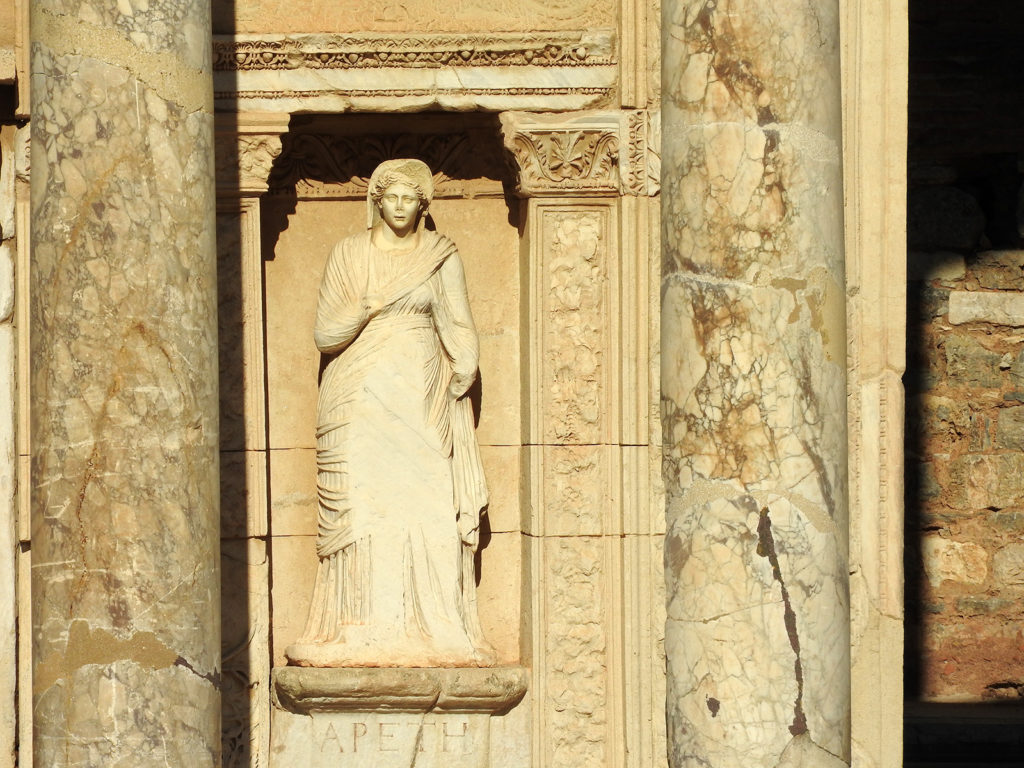
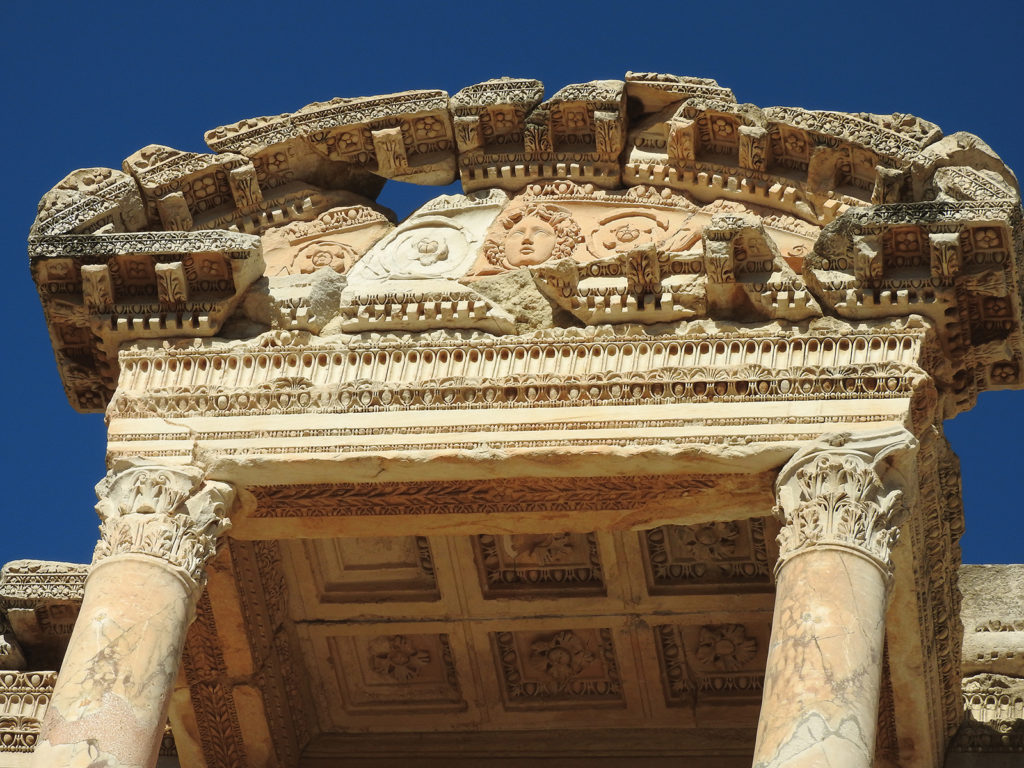
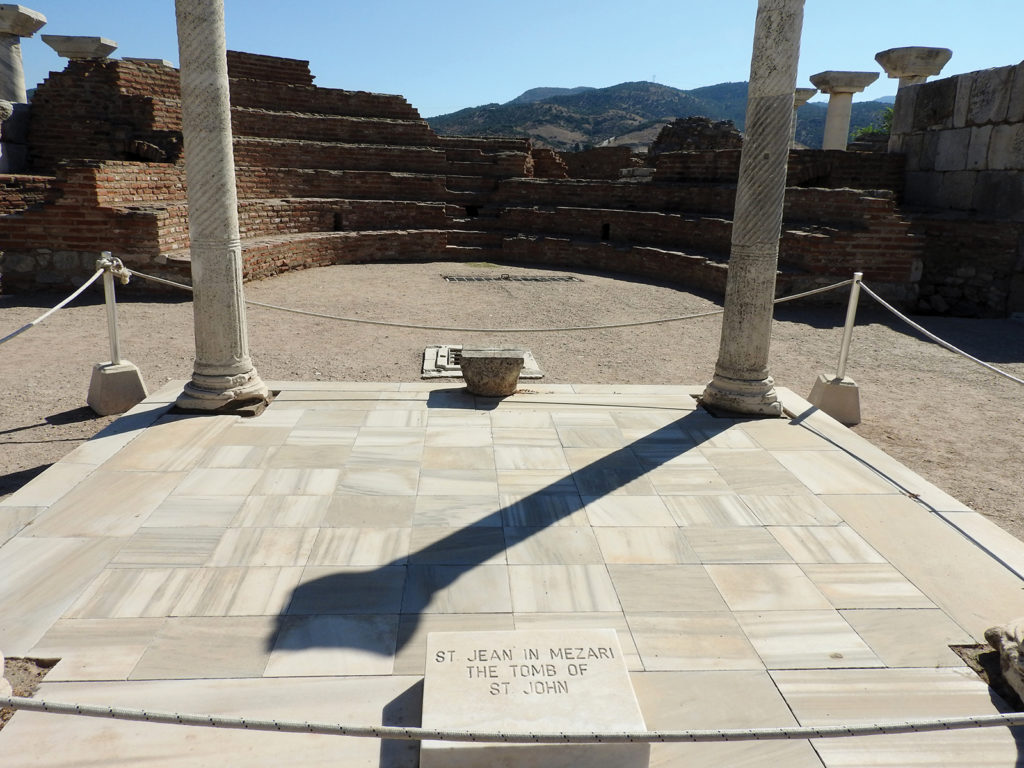
Ephesus continued to thrive despite its changing borders and falling under Egyptian rule, Persian rule and then Roman rule by 129 B.C. where the city became the seat of the regional Roman governor. It was during the reforms of Caesar Augustus that brought Ephesus to its most prosperous time and most of the ruins seen today such as The Library of Celsus and the Amphitheatre were built or rebuilt during his reign.
Along with being a centre of culture and commerce, Ephesus also played a key role in the spread of Christianity. As a Christian Apologist, Bill was especially keen to explore this part of the city’s history. “After leaving Jerusalem, Mary, Mother of Jesus, is thought to have moved to Ephesus to escape persecution,” Bill recounts. “It was the Apostle John who took her there and ran his ministry. Both of them lived here until they died.” Bill says that he and Pam toured what is believed to be Mary’s house along with the confirmed gravesite of Apostle John, which they say to be an incredible piece of history to witness.
Bill explains the rise in Christianity that happened after the Apostle Paul came to rebuke the worshiping of Artemis. Paul’s message wasn’t openly received by everyone; when he tried speaking at the amphitheater, he was run out of town by a man named Demetrius whose business and faith both relied on the goddess Artemis. However, Ephesian officials protected Paul and his followers and eventually Christianity became the city’s official religion.
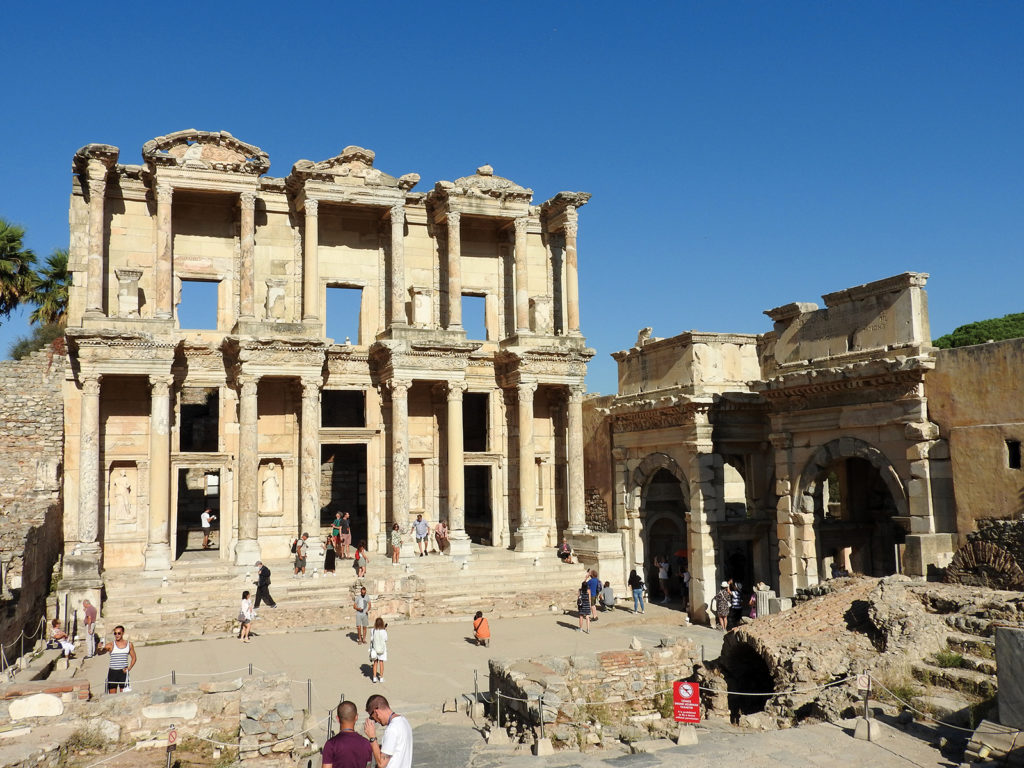
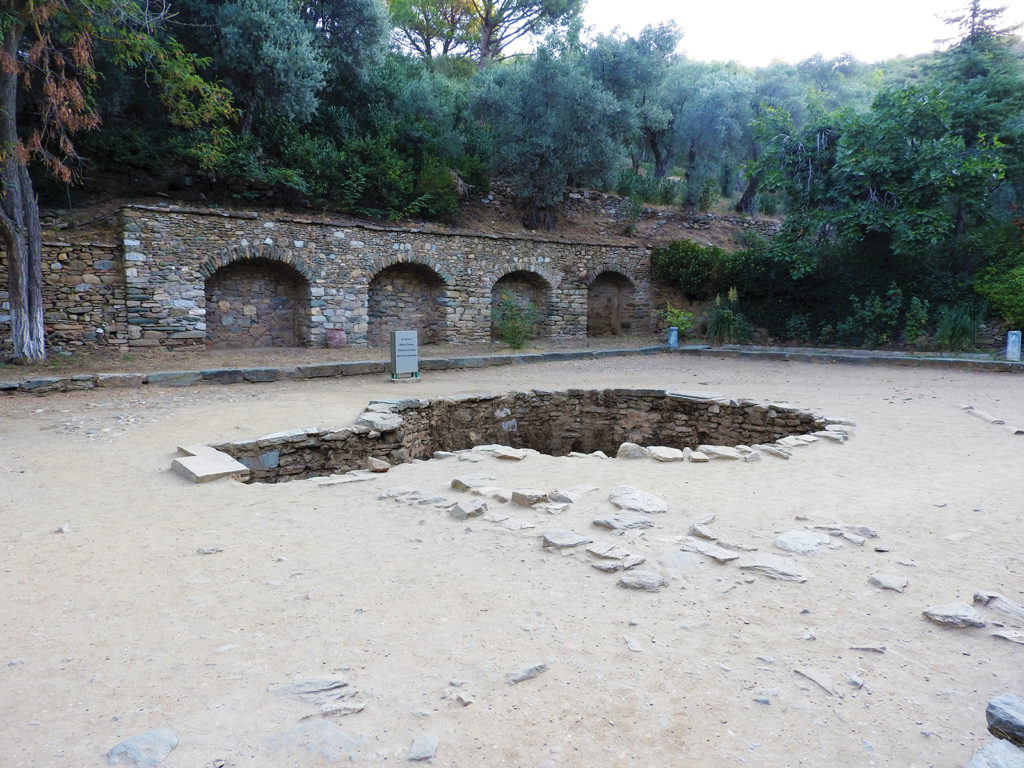
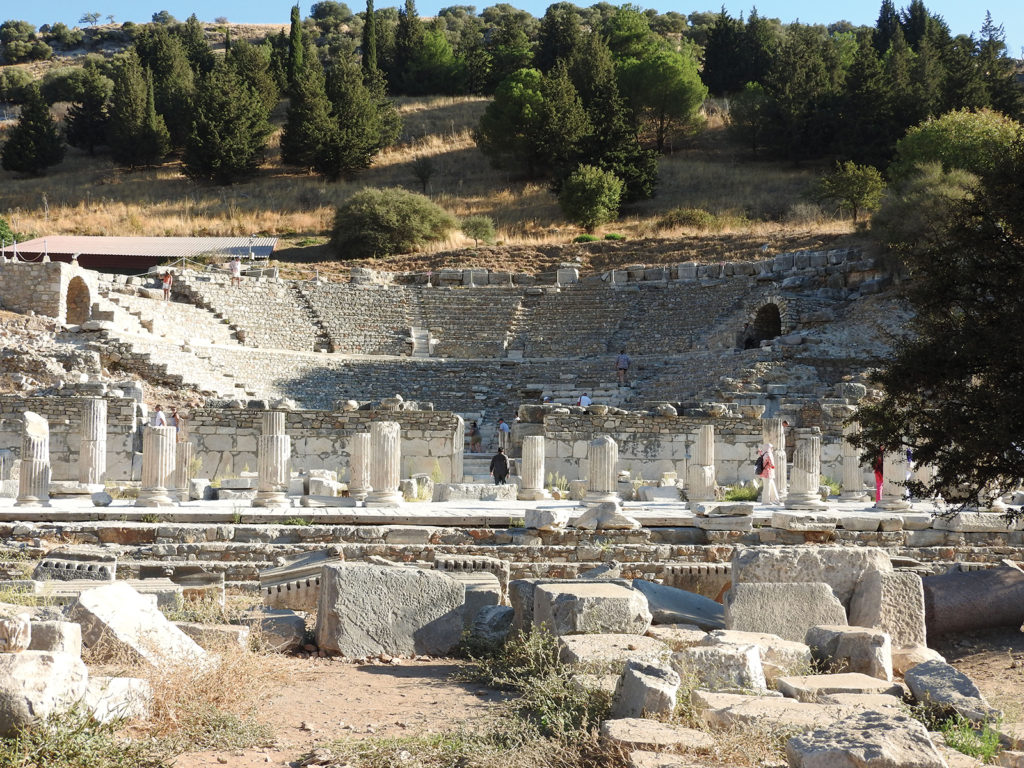
Tourists can see examples of Christian dominance throughout Ephesus, such as a church being built atop Apostle John’s tomb and the baptismal pools. “In Christianity, being baptized by submersion was symbolic to dying in an old way of life and living in a new life. You can see this practice immediately being put into place once Christians were there.” Bill says there were two notable pools, one beside the church that was built, and an even bigger one located near Mary’s home.
After Christianity took over Ephesus, all traces of the goddess Artemis were destroyed, places of worship were banned, schools and temples were closed. It was during this time that Ephesus peaked and met its decline through additional conquests, a large amount of physical looting and destruction by the Goths in 262 A.D., accumulating silt in the port which cut Ephesus off from their main trading method, and then an eventual abandonment.
What is left of Ephesus is a feeling—a sense of what could have been and the potential that lies in its streets. It’s through visiting historical enthusiasts like Pam and Bill that keep the story of Ephesus alive and what will keep us going in searching beyond the 15%.


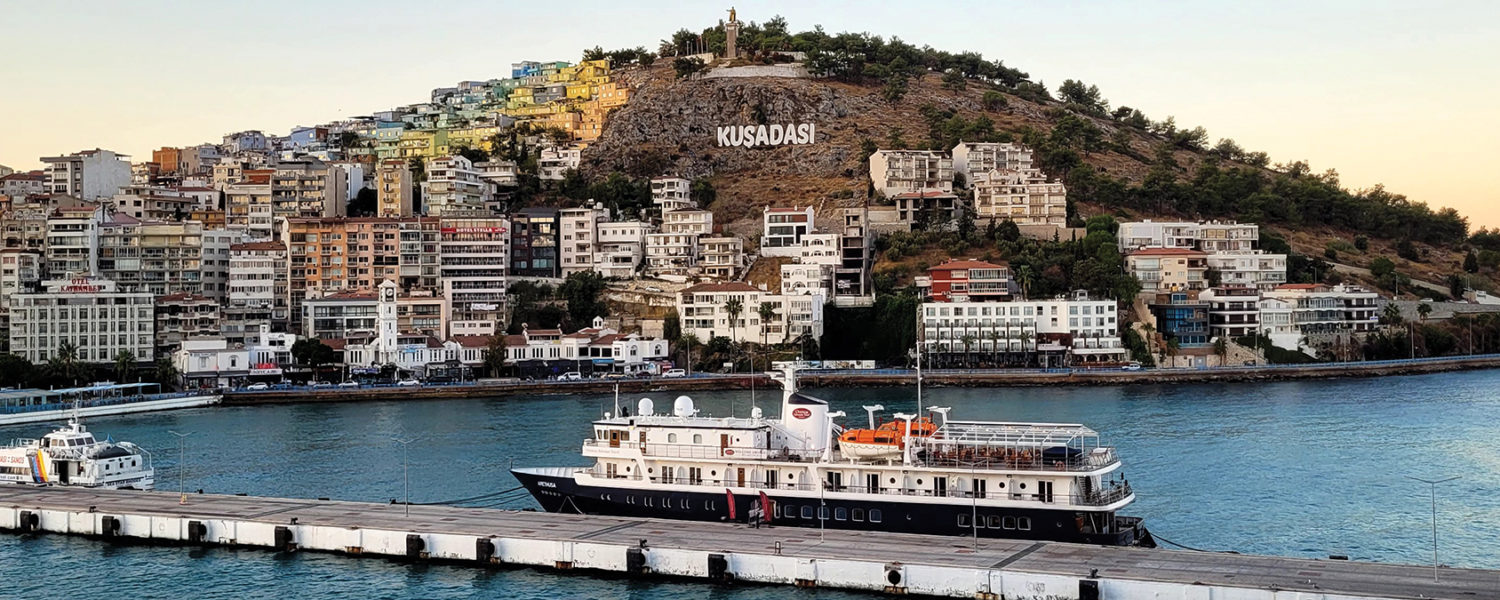

Add comment